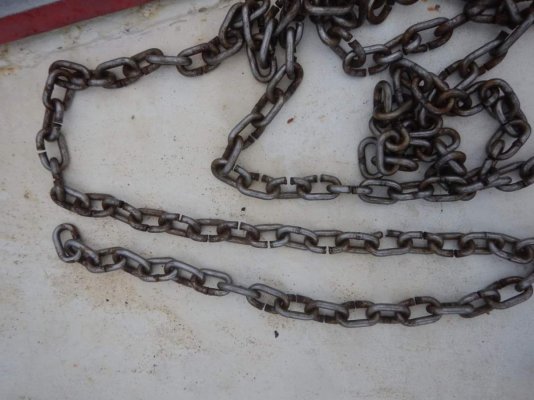Simi 60
Guru
- Joined
- Jul 1, 2016
- Messages
- 5,482
- Location
- Australia
- Vessel Make
- Milkraft 60 converted timber prawn trawler
I have never used stainless underwater for what I thought were obvious reasons
Some think it's a great idea.
This from a FB cruising site
Some think it's a great idea.
This from a FB cruising site
Somebody posted a warning against using SS anchor chains recently. I replied, I didn't make any bad experience with them recently. The situation has changed :-(.
I was caught in a 40kn blowout at Lady Musgrave Island a few days ago. As it was well advertised, I dropped 2 anchors - one on 10mm short link and another on 10mm long link SS chains.
When the seemingly uneventful show was over, I found no anchor on the short link chain and almost all welds on the long link one broken - the chain didn't part though.
I recovered the anchor and found the guilty link as well. The break was showing an old crack that developed deeper over time by an oxygen deprivation corrosion. The surface of the link had also a few hairline fractures. Examination of a number of other links on the chain found no other similar crack, what led me to a hope I had only one faulty link.
I attached a recovery buoy to the anchor, dropped it and gave it a decent jolt with the boat. The chain has severed with a loud bang...
The breakage on the link was showing the same pattern as on the first one. Anybody wants 30m of a nice shine SS 10mm chain? Cheap!
The problem is, SS doesn't age so much with years as with load cycles. There is no other mechanism producing higher number of load cycles than an anchor chain on a boat on choppy seas... Stainless steel chain is a deathtrap. Never again - maybe for "lunchbreak" anchoring in a calm water when I am in a full control, have recovery buoy on my precious anchor attached and a few hundred m drifting wouldn't be any issue.
What else to say?
"Have a SS chain? If so, think twice!"

